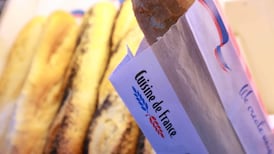TOP 1000/MOTOR INDUSTRY: IT HAS BEEN a dismal year for the motor industry, both internationally and at home. With General Motors and Chrysler seeking court protection from bankruptcy and even seemingly invincible operations such as Toyota slipping into losses, it was inevitable that the downturn would hit Irish
roads as well.
The severity of the economic downturn, however, took many by surprise and even the handful of
depleted turnover figures on display in our Top 1,000 listing fail to reflect the true extent of the recession on the car industry in recent months. The 65 per cent fall in new car sales so far
this year was far in excess of even the most doom-laden predictions of 18 months ago.
Distributors have been caught with too much stock or have been forced to help out dealers with financing for the excess stock they are carrying. Footfalls in dealerships are reportedly down to 1990 levels. It’s hoped that sales this year will reach 50,000 new cars, a far cry from the heady days of 186,540 in 2007.
Several years of strong new car sales should have meant that firms built up strong cash reserves to ride out the current storm. Unfortunately, the early years of this decade and the increase in car sales coincided with the introduction of new EU rules on car sales that ultimately allowed manufacturers to introduce minimum criteria for dealers in particular brands. In many instances that
reached farcical levels, dictating the size of floor tiles on dealer floors.
The new regulations coincided with the building boom in Ireland. Many dealers were faced with multi-million euro investments in premises to retain franchises. Had the good times rolled on, costs would have been covered.
However, what has happened has been, for many, the perfect storm. Sales have fallen, stock remains on the forecourt – both new and used – losing value every day, while banks are less than eager to lend yet more cash for working capital.
Property loans need repaying and those who had cash reserves often invested it in the supposedly solid business of bricks and mortar. These investments have now increased pressure on their core
motor businesses. So what does the future hold and how can dealers cope? Of primary importance is cashflow. Many are already operating short-time working and looking to the service bay and
workshop to generate income.
With 50,000 jobs under threat in the industry, according to the Society of the Irish Motor Industry (SIMI), the Government realises the importance of offering some succour to the trade.
In April's supplementary Budget, requested changes to the VAT system for dealer stock was the only positive news for any industry.
Even this has been parked for now as problems have arisen with the finer details of the scheme. However, the decision to give dealers additional time to pay VAT bills last month underlines the
perilous state of the motor trade and the Government's recognition of the situation it faces.
While no one wants to commit to predictions, most say 2010 will be a year of consolidation, rather than growth.
The lifecycles of motor vehicles will guarantee a steady trade of cars, but most suggest it will be
2011 before we see a return to any real growth. That, of course, depends on an overall improvement in economic conditions next year.
How many dealers survive to see this date – or wait around in the hope it happens – remains to be seen. Several industry figures suggest the natural order of the Irish market could be in the
region of 120,000 new cars a year. In terms of the big motoring names on the Top 1,000 list, both Toyota and Ford have model lifecycle changes in train that should keep the forecourts
fresh, though no doubt they would prefer to have these models on offer during periods of stronger sales.
At distributor level, the big change in recent years has been the gradual move by manufacturers to regain control of their Irish operations. BMW started the trend in 2003, followed by the Volkswagen Group and, lately, by Renault. However, signs that centralised control is not the answer for
everybody can be seen in the decision of Land Rover to hand over distribution rights for Ireland to the OHM Group from the start of this month. It already holds the distribution rights for the Land
Rover's sister marque Jaguar.
As the market contracts, we might see other brands opting to turn to Irish managers to make the most of the car market here. Finally, the list also includes a few motoring anomalies, not least the
appearance of International Motors, Irish distributor of the Subaru brand.
It reported a turnover of €331.1 million for 2007, with a profit of €14.8 million. These impressive
figures are not, however, attributable to the 436 Subarus sold here during that year but rather its international operations as distributor of several brands in the UK and Scandinavia.
Next year's list will reflect the true extent of the financial pain currently being suffered by the motor industry. While it is very likely the current names in the Top 1,000 will still be in the ranking, the industry is going through some seismic changes and, like the dramatic reduction in capacity on a global scale currently underway, a fall in the size of the Irish motor industry seems inevitable in
coming months.










